Caught by the buzz: Saving bumblebees is 'the best job'
- Published
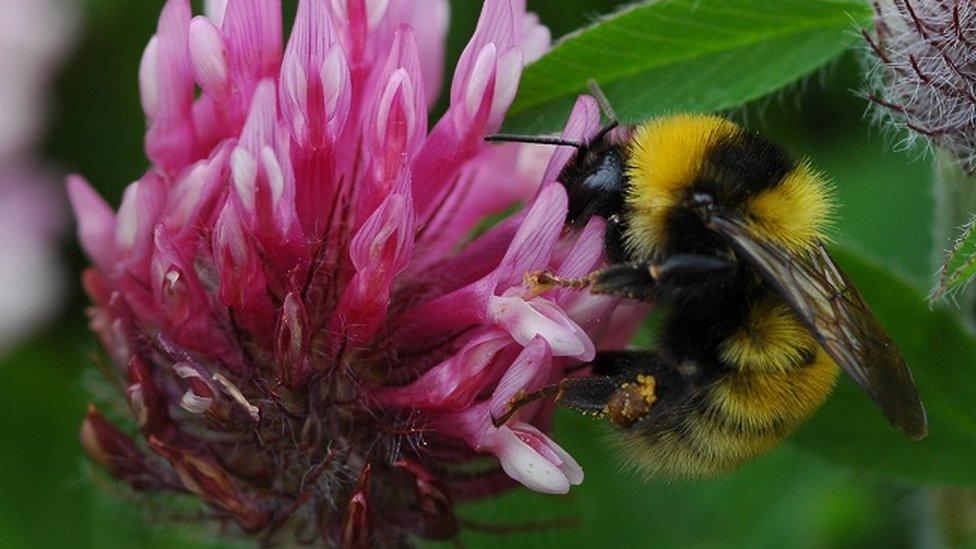
A great yellow bumblebee
The great yellow is one of the UK's rarest bumblebees and only survives in a handful of places in Scotland. Katy Malone is among those protecting the last populations of the bee.
Over the next few weeks great yellow queens will begin emerging from their months-long hibernation.
Looking out for them will be the Bumblebee Conservation Trust's Katy.
She has worked for different conservation organisations for almost 20 years, but says helping to save the great yellow is "the best job she has ever had".
"We expect to see the great yellow emerging from hibernation by about mid-May," says the Highlands-based conservation officer of the "charismatic" furry yellow and black bee.
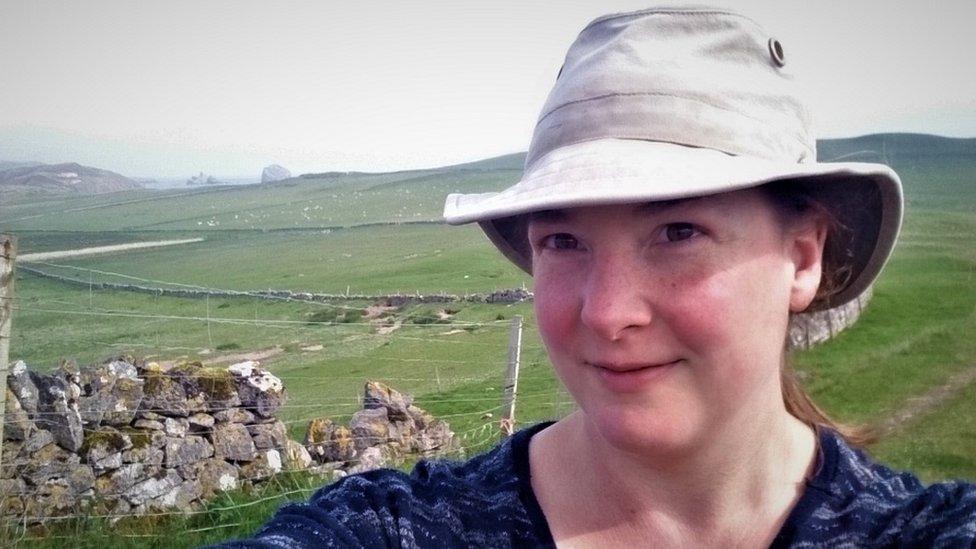
Katy Malone is involved in work to protect populations of great yellow bumblebees
Queen bumblebees hibernate underground.
Once they emerge, the bees first need to feed on nectar before beginning their search for a suitable nest site, sometimes this will be an old rabbit burrow or mouse hole.
In the nest, the already fertilised great yellow queens produce small colonies of worker bees, "daughter queens" and male mates for the new queens.

How to help bumblebees
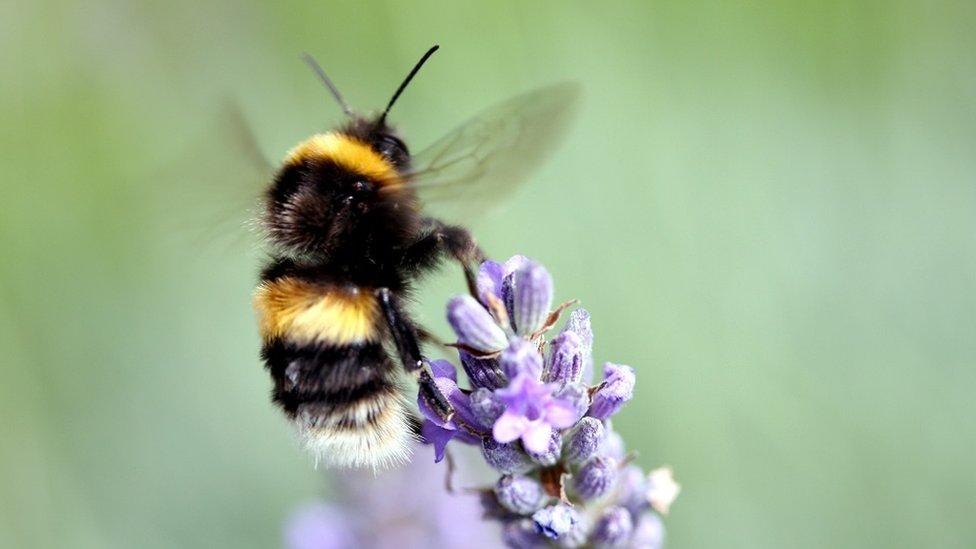
The Bumblebee Conservation Trust recommends a variety of plants that can be planted in gardens to provide bees with nectar.
They include heathers, cornflower and honeysuckle.
But one of their favourites are dandelions, often seen as an annoying weed by gardeners.
Information on identifying Scotland's bumblebees can be found here, external.

The great yellow was once found widely across Great Britain, with records for the species going back to the 1900s.
But intensive farming practices, in particular a switch from hay to cutting silage for feeding cattle, led to habitat losses. Flowers the bees rely on are available for longer in a field of grass grown for hay than one cut for silage.
By the 1980s, 80% of the places the great yellow was found had been lost.
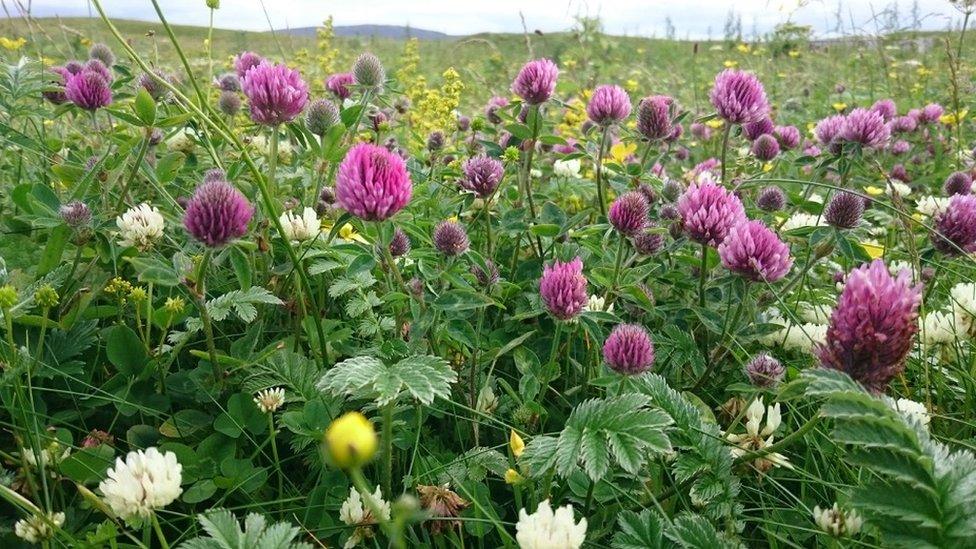
Flower rich machair is prime great yellow habitat
Today, there are just five known "population centres" of the bee, according to the Bumblebee Conservation Trust (BCT).
They are Caithness and north west Sutherland in the north Highlands, also Orkney, Inner Hebrides and Western Isles.
On the islands, the great yellow thrives on coastal meadows called machair.
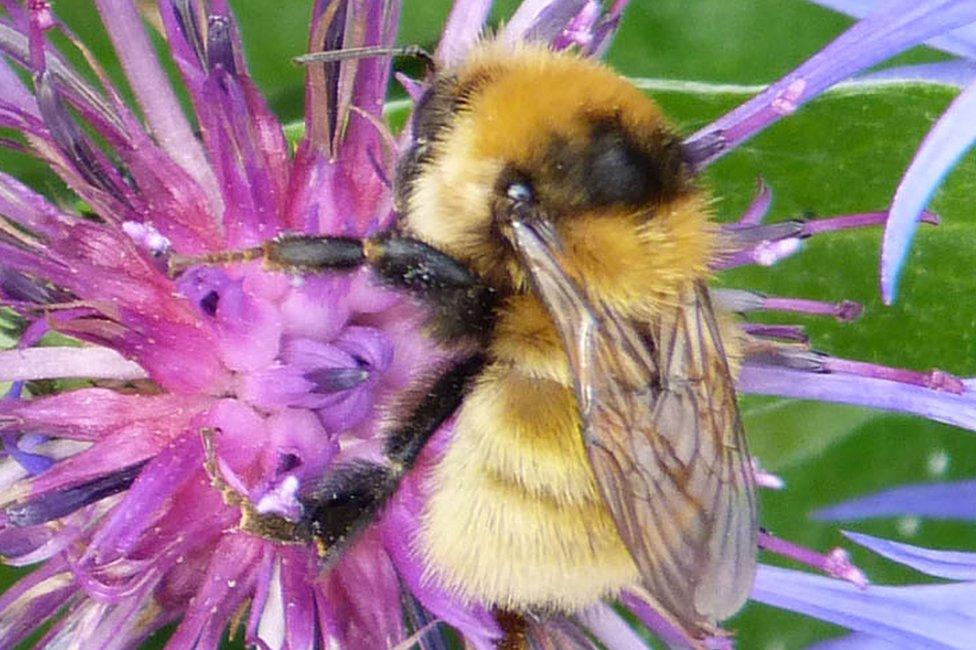
The great yellow has distinctive yellow and black colours
BCT has been working with crofters and farmers to help keep areas of wild flowers, such as red clover, comfrey and knapweed, available to the bee.
With the help of volunteers, Katy carries out surveys of great yellows in Caithness and Sutherland.
This year, she is planning for surveys in areas identified last year as having potential for supporting great yellow colonies.
"I love showing people the bumblebees," says Katy. "Bumblebees are easy to count because of their size and colour.
"And because bumblebees don't perceive humans as predators they go about their lives not be bothered by us being near them."
Through the summer the next generation of queen bees will feed up on nectar, building up their "fat stores" in preparation for hibernation.
"They are like tiny little bears," says Katy.